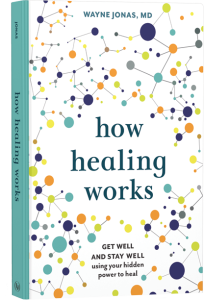It’s been revealed that the healing effect from fake treatments could vary from 0% to 100%—even for the same disease and same treatment—depending on the context and cultural meaning in which they were delivered. In other words, the cultural context influenced the meaning, which in turn influenced the biology, the pathology, and the outcome. The effects were very specific.
In fact, the meaning and context surrounding how a treatment was delivered had a much greater impact on healing than the treatment modalities themselves. Inert treatments for pain worked better if you gave them by needle rather than pill; gave them in the hospital rather than at home, applied them more often rather than less frequently, charged more for them rather than less, and delivered them with a positive and confident message rather than a neutral or skeptical message.
Acupuncture was found to be more effective the closer the study was conducted to China, where acupuncture was developed and is widespread. I suspect surgery works better in the West, though no one has studied that. It seemed that the magnitude of a person’s healing depended less on the suggestibility and belief of the individual patient than on the collective belief of the culture and the ritual created to deliver that belief.
Professor Ted J. Kaptchuk, director of the Center for Placebo Studies at Harvard Medical School, is one of the world’s most respected researchers on the placebo response. In a recent analysis, he sheds light on the variability of these effects by comparing three types of healing encounters: Navajo ceremonial chants, acupuncture treatment in the Western world, and the biomedical provision of health care. He describes each encounter as being surrounded by beliefs, narratives, “multi-sensory dramas,” and culturally defined influences, all of which can be described as rituals in the treatment of illness.
Looking at this research, I began to wonder if one of my patients got better from surgery not because it was “real,” but because surgery was more culturally meaningful to him than the other treatments he had undergone? I was skeptical of this explanation.
The patient had been through many treatments and should have benefited even if they were from placebo effects. But two studies conducted after I had seen him seemed to contradict this assumption. In those studies, patients were randomly assigned to get either the cement or balloon injections into collapsing disks (as he had received) or a fake procedure that mimicked the real injections but did not manipulate the spinal disc in any way. In both studies, patients who underwent the fake procedure did just as well as those who got the real procedure.
Sham Surgery Studies
I still found this hard to believe. Could it be that, at least for pain, the meaning and context of a treatment produced much of the healing, even in patients who were not suggestible? Even when “hard” procedures were used, such as surgery, that manipulated tissues and corrected anatomy? To test this assumption, my team and I did a meta-analysis of all surgery studies of chronic pain, whether in the back, knees, abdomen, or heart.
We selected studies that compared real surgery to sham surgery, in which patients and doctors went through the ritual of surgery but no real correction of anatomy was done. We were able to determine the quality of the studies and then combine results into a single estimate of the contribution to healing pain from “true” surgery. The final analysis showed equally good improvement of any pain condition when the ritual of surgery was applied to the patient but no actual surgery was done.
These sham surgery studies showed that, at least for pain treatments, healing occurs from something else. Could it be that the millions of surgeries done every year to treat pain produce healing because they are powerful types of ritual placebos? Could it be that healing is connected to patients’ beliefs and behavior and to those around them more than the specific treatment they received?
Collective vs Individual Belief
Professor Kaptchuk has done two studies exploring to what extent the effect of treatment depends on collective belief versus individual belief. In one study, all patients with a painful abdominal condition (irritable bowel syndrome or IBS) were given a fake treatment—sham acupuncture. However, the social ritual was varied between groups to enhance the dose of collective belief. In one group the practitioner came in and said very little and delivered the treatment. In a second group, the practitioner explained how the treatment works and set the expectation that the treatment will work.
In the third group, a prominent physician from a prominent medical school delivered the treatment with a full explanation and a story about the good results others had obtained with the treatment. All the patients held about the same amount of individual belief in acupuncture at the beginning of the study. But the greater the social meaning produced by the ritual, the better the effect. In the third group, the benefit the patients experience is greater than that achieved by the best drugs approved for treatment of IBS.
In a second study by Kaptchuk, patients were actually told ahead of time that the treatment was fake. One group was given placebo pills with this description: “Placebo pills made of an inert substance, like sugar pills, that have been shown in clinical studies to produce significant improvement in IBS symptoms through mind-body, self-healing processes.” This statement created an expectation that even these placebos have an effect. A second group of IBS patients was given no treatment but with the same quality of interaction with providers. The group given the placebo (and who knew it was placebo) had significantly better pain reduction and improved quality of life.
No matter what form the ritual takes, says Kaptchuk, these can have powerful influences on the healing process. “We cannot explain the effects of rituals using placebo treatments simply by belief and expectation,” Kaptchuk explains. “While belief may contribute some to the outcome in these studies, the effects produced by healing ritual are much larger than can be explained by what the patient believes about the treatment. The main reasons these effects occur is still a mystery.”
How The Body Reacts
Research suggests that healing rituals are associated with modulations of symptoms through neurobiological mechanisms, just like we see from drugs. They can not only affect pain, but change the immune system, alter organ function, shift brain processing, and even influence specific cell receptors and genes. One study, done by renowned placebo researcher Professor Fabrizio Benedetti of the University of Turin, Italy, demonstrated that if you link a placebo treatment ritual to a painkiller, you can continue to get pain relief with the placebo after withdrawing the painkiller. And even more remarkably, the placebo will work using the same cellular mechanism of the painkiller to which it was linked.
The body not only can learn to heal, it can be taught which specific mechanism in the body to use to produce the effect. Placebo effects, writes Kaptchuk, are often described as “non-specific.” He suggests instead that they should be considered—and further researched—as the “specific” effects of healing rituals.
Adapted and reprinted with permission from How Healing Works: Get Well and Stay Well Using Your Hidden Power to Heal by Wayne Jonas, MD, copyright ©2018. Published by Lorena Jones Books, an imprint of Penguin Random House LLC.
Drawing on 40 years of research and patient care, Dr. Wayne Jonas explains how 80 percent of healing occurs organically and how to activate the healing process.



 Take Your Health Into Your Own Hands
Take Your Health Into Your Own Hands